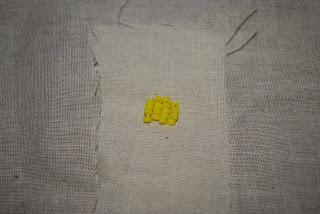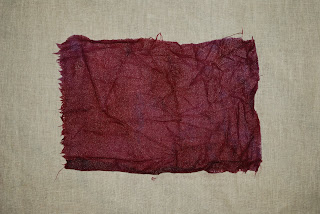Upon arrival at the gorgeous new Museum of Art and Design (and Crafts i guess) I waited in the wrong line for about a half hour, once I finally got everything straight and paid for my ticket I was instructed to start from the 6th floor and work my way down.I didn't stay on the 6th floor long, it was an open ceramic studio and although the examples of work were beautiful, intricate and engaging I found the atmosphere at bit too 'professional' to be thought of as a studio- the guest sculptor was wearing a very nice suit while standing next to his half finished earthenware sculpture- strange.
Once arriving on the fifth floor I was completely engaged by the 'Second Lives-Remixing the Ordinary' exhibit. It became clear why we were instructed to visit MAD; this exhibit had everything to do with our 'operations' of the past few weeks- re-purposing, re-appropriating, process, materials, values, craftsmanship- in a way everything felt extremely familiar. The most obvious difference I felt between our work in class and the concepts of the museum exhibits is that they completely and totally let go of purpose as we had been thinking of it (a task that was challenging for most of us to do); in most cases the pieces were examples of function replaced by fine art.
Some stand out examples of this re-assignment of function and inventive re-use were:
- Tara Donovan's 'Bluffs' (which from far away appear to be a glittering, glowing mass of crystal yet upon closer inspection is merely nothing but standard shirt buttons and glue)
-El Anatsui's 'Skylines' (which reminded me very much of a Gustav Klempt painting but actually was flattened cans joined together with copper wire)
-Portait of an Afrian American Woman made with hair combs
-wedding dress made from gloves
-Paul Villinski's 'My Back Pages'- butterflies cut from records- just stunningly beautiful
-Hew Lockes' 'Golden Hoard'- which totally reminded me of Michael!
Other pieces I found to be more complex:
-Xu Bing's 'Book from the ground'- which allows people to type sentence-like messages using computerized ideograms. There were many links to Kevin and I's culture in this piece-like the idea of a coded means of communication.
-Thomas Glassford's 'Giant Abacus' which unlike most others actually did have a functional purpose- it worked as an abacus and represented changes in the worlds population during the exhibit
The most inspiring moment of my trip came to me when reading the information on Jill Townsley's 'Spoons' in which I read this quote:
"The actual movement of a process can never exist retrospectively, it leaves only a trace of its action."
This quote speaks to is the constant struggle of an artist, trying to make the viewer exist with the piece, experience it as it's happening. It is something that is important to remember when creating and designing for others.
The rest of MAD was great, I truly enjoyed the jewelery exhibit as well as the permanent collection, they had a lot of very interesting, beautiful and sometimes humorous things (did anyone catch Chris Antemann's 'Lust and Gluttony' porcelain sculpture- I think I looked at it for about 10 minutes). I loved Peter Chang's untitled bracelets (this really has me wishing we could have taken pictures) as well as Ben Trupper Baumer's wooden platter- absolutely exquisite!
All in all very nice visit. It had me wishing we had gone earlier to see 'Second Lives' because I now, very clearly, understand what an operation should be!


 Buddha sculptures made out of books
Buddha sculptures made out of books A Lovely Love Seat made out of shoes
A Lovely Love Seat made out of shoes



































